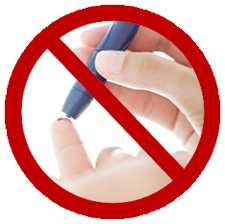Baylor prof’s invention may spell end to finger-prick tests for diabetics
 Two years ago, we wrote about a new technique for measuring blood glucose levels that used electromagnetic sensors (rather than needle pricks). The sensor, created by electrical and computer engineering professor Dr. Randall Jean, promised a noninvasive alternative for diabetics who have to monitor their blood sugar levels, but it was far from ready for market. For starters, the original machine was far too big to be practical for personal use.
Two years ago, we wrote about a new technique for measuring blood glucose levels that used electromagnetic sensors (rather than needle pricks). The sensor, created by electrical and computer engineering professor Dr. Randall Jean, promised a noninvasive alternative for diabetics who have to monitor their blood sugar levels, but it was far from ready for market. For starters, the original machine was far too big to be practical for personal use.
Today, there’s good news: Baylor researchers led by Jean have developed a sensing mechanism that uses a circuit board small enough to make the device portable. Initial tests show that the method has the potential of achieving the same or even better accuracy than current commercial sensors, minus the annoying finger pricking. Jean now holds a patent for the general measurement method, called ultra wideband pulse dispersion spectrometry, and Baylor has applied for a patent pertaining to non-invasive glucose monitoring. Further testing is still needed, but the results so far are promising.
Sic ’em, Baylor researchers!

